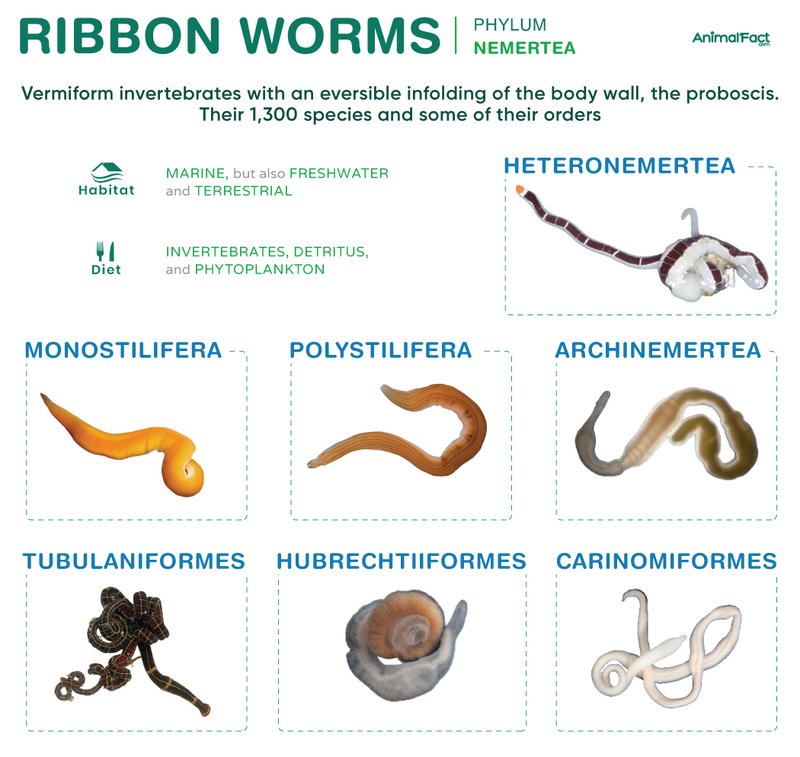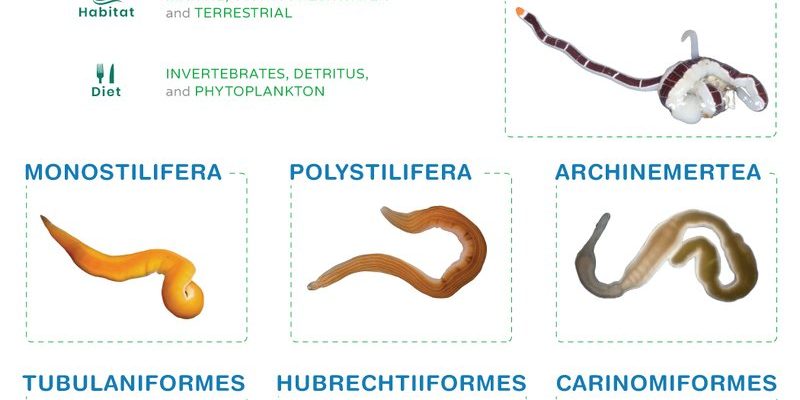
So, what exactly are ribbon worms, and why should we care about their burrowing habits? Well, these long, slender creatures, formally known as *Nemertea*, are more than just oddities of nature. They act as important scavengers, helping to break down organic matter and contribute to soil health. Understanding where and how they like to burrow can offer insights into the environment they thrive in, which is vital for maintaining balance in ecosystems. Let’s dive into the world of ribbon worms and explore their preferences in burrowing and substrate.
What Are Ribbon Worms?
Ribbon worms are a class of worms that can be found in a variety of habitats, but they’re particularly fond of marine environments. These intriguing creatures can stretch out to impressive lengths—some even reaching up to 30 meters! Despite their name, they aren’t true worms; their bodies are smooth, long, and somewhat flat, which allows them to wiggle through tight spaces effortlessly.
Honestly, if you were to look at a ribbon worm, you might think it’s just an odd piece of seaweed at first glance. They can range in color from bright greens to deep purples, often blending in with their environment. They’re well-adapted to their surroundings, which is part of why they thrive in various substrates. Depending on the species, you might find them swimming freely in the ocean or buried deep in the sand.
Burrowing Behavior of Ribbon Worms
You might be wondering how these worms manage to burrow into the ground or sand effectively. Ribbon worms use a combination of muscle contractions and the unique structure of their bodies to dig into the substrate. They can extend and contract their bodies, creating a worm-like motion that helps them push through the soil. Think of it like an inchworm making its way across a branch—slow, but effective.
They usually prefer to burrow in soft substrates, which allows for easier movement. When they find a suitable spot, they can dig deeper to avoid predators and to find food sources like small invertebrates or decomposing matter. This digging isn’t just for fun; it’s essential for their survival, helping them stay hidden while also allowing them to hunt for food.
Substrate Preferences
The type of substrate ribbon worms prefer can vary significantly depending on their species and habitat. Generally, they like sandy or muddy environments. Here’s a breakdown of what they generally prefer:
- Sandy substrates: Ribbon worms often burrow into sandy areas, where they can easily dig and find food. The flexibility of sand helps them move around without much resistance.
- Muddy substrates: Some species favor softer mud, which provides ample organic material to feed on and keep them hidden from predators.
- Rocky areas: While less common, some ribbon worms make their home among rocks, using crevices to hide from predators.
The substrate not only influences where they choose to live but also affects their behavior and feeding habits. In muddy areas, for example, ribbon worms can utilize the organic matter present as a food source, showcasing how their habitat can shape their lifestyle.
Impacts of Substrate Type on Ribbon Worms
Different types of substrates can impact ribbon worms in various ways. For one, the texture and composition of the substrate can affect their ability to burrow and find food.
If you think about it, a rocky substrate is like trying to wander through a crowded room filled with furniture—it’s tough to navigate. In contrast, a soft, sandy beach is like an open park, making it easy to roam around. That’s why ribbon worms are more common in sandy areas, where they can easily stretch out and explore.
Moreover, the type of substrate can influence their **predation risk**. In soft, murky environments, they can quickly burrow and hide from potential predators, enhancing their chances of survival. This behavior highlights the importance of healthy substrate choices for their well-being.
How Do They Choose Their Burrowing Sites?
So, how do ribbon worms decide where to burrow? Well, it’s a mix of instinct and environmental cues. They typically look for places with a sufficient amount of organic matter and minimal disturbances. Ribbon worms can sense vibrations and changes in their environment, which helps them identify safe spots to dig.
You might observe that they favor areas that have recently experienced organic matter accumulation, like after a storm or organic decay. They are opportunistic feeders, meaning they will seize any chance to find food. This adaptability is crucial for their survival.
Beyond just feeding, finding the right burrowing site also plays a role in their reproduction and overall health. Choosing a suitable spot with the right substrate can lead to better reproductive success, proving that location matters in more ways than one.
The Role of Ribbon Worms in Ecosystems
You know, it’s pretty fascinating to think about the role ribbon worms play in their ecosystems. By burrowing and feeding, they significantly contribute to nutrient cycling and soil health. They help break down organic materials, turning them into nutrients that plants and other organisms can use.
Ribbon worms also serve as prey for various marine animals, helping maintain the food web’s balance. Without them, the health of their ecosystems could decline as other species rely on them as a food source. Their burrowing behavior aerates the soil, promoting healthier environments for other creatures.
In a way, you could say ribbon worms are unsung heroes of the ecological world—working quietly beneath the surface to support life above. Their existence is a reminder of how interconnected everything is in nature.
Conservation and Care for Ribbon Worm Habitats
With all that ribbon worms do for the ecosystem, it’s important to protect their habitats. Factors like pollution, habitat destruction, and climate change can have significant impacts on where they live and how they thrive.
If you’re ever near a coastal area, consider participating in beach clean-ups or advocating for habitat protection. By helping maintain clean and natural environments, you’re doing your part to support these incredible creatures and their role in local ecosystems.
In the grand scheme of things, even tiny creatures like ribbon worms contribute to the bigger picture, fostering a healthier planet. By understanding their burrowing habits and substrate preferences, we can appreciate their roles and work to keep their environments thriving.
In closing, the world of ribbon worms is fascinating and important. Their unique burrowing behaviors and substrate preferences not only reflect their adaptability but also the essential roles they play in maintaining a balanced ecosystem. The more we learn about these curious creatures, the better we can protect and appreciate the natural world around us.

